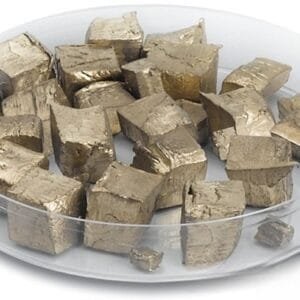TFM offers high-purity Cadmium Fluoride (CdF2) evaporation materials, a type of fluoride ceramic widely used in deposition processes. With purity levels reaching up to 99.9995%, these materials are critical for ensuring the high quality of thin-film coatings. TFM focuses on producing evaporation materials that meet stringent quality standards, making them reliable for demanding applications.
Related Products:
Cadmium Fluoride Evaporation Materials Specification
| Material Type | Cadmium Fluoride |
| Symbol | CdF2 |
| Appearance/Color | White, crystalline solid |
| Melting Point | 1,110 °C (2,030 °F; 1,380 K) |
| Density | 6.33 g/cm3, solid |
| Purity | 99.9% ~ 99.99% |
| Shape | Powder/ Granule/ Custom-made |
Applications of Cadmium Fluoride Evaporation Materials
These materials are commonly used in various deposition methods such as semiconductor deposition, chemical vapor deposition (CVD), and physical vapor deposition (PVD). Due to their optical properties, they are essential for applications including:
- Wear protection
- Decorative coatings
- Display technologies
Packaging and Handling
Cadmium Fluoride evaporation materials are carefully packaged to maintain quality and prevent damage during transportation and storage. Every package is clearly labeled for easy identification, ensuring smooth handling throughout the supply chain.
Contact TFM for Custom Solutions
TFM is a trusted supplier of high-purity Cadmium Fluoride evaporation materials, available in various shapes like tablets, granules, rods, and wires. We also offer custom forms and quantities based on your specific needs. Additionally, TFM provides evaporation sources, crucibles, heaters, and e-beam crucible liners. For pricing and additional product information, please contact us directly.


 MSDS File
MSDS File



Reviews
There are no reviews yet.